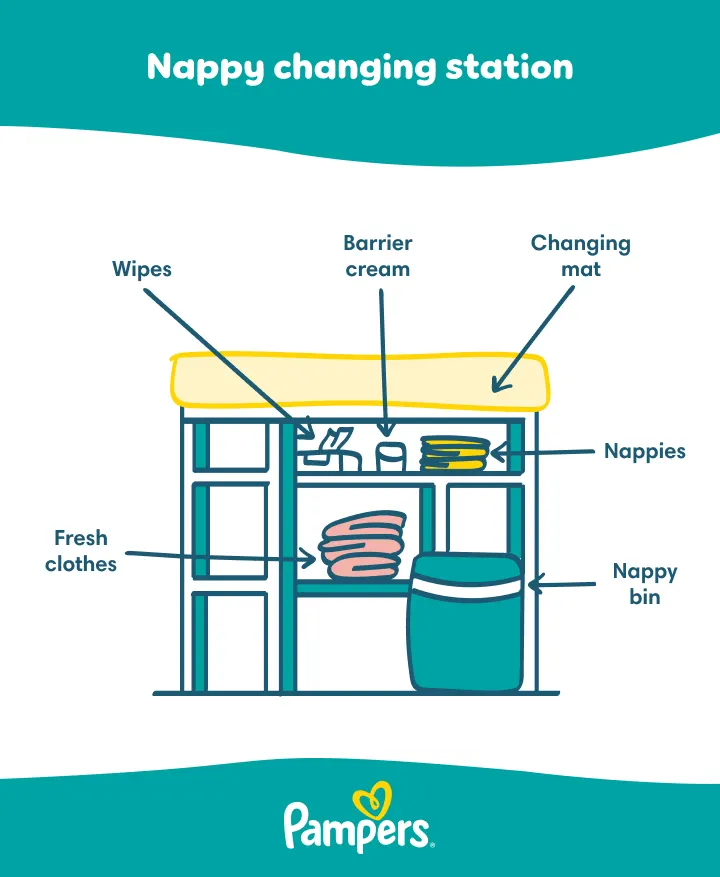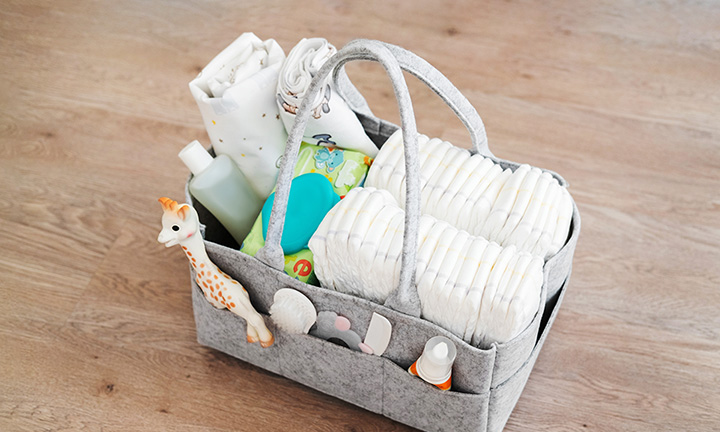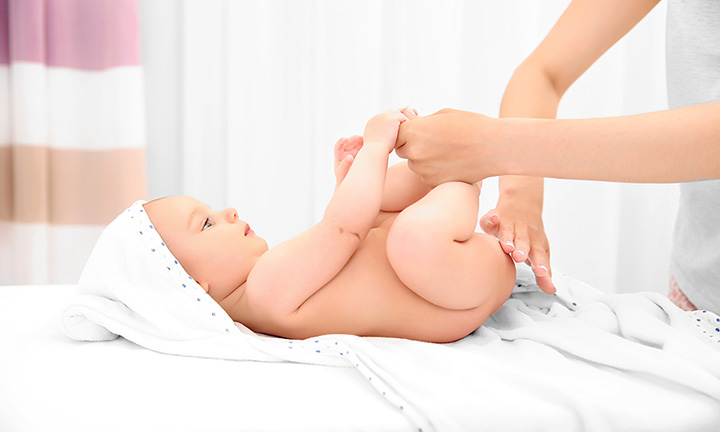
How Often to Change a Newborn’s Nappy
Every baby is unique, and how often your little one wees and poos can vary from day to day. But when it comes to how often to change a newborn’s nappy, most infants need a change 10 to 12 times per day. This frequency varies depending on age, so read on to learn how many nappy changes a day to expect, how to manage a nappy-changing schedule as your little one grows up, plus how often you should change a newborn’s nappy at night.
How Often Should You Change a Baby’s Nappy?
Newborns need frequent nappy changes, around 10 to 12 per day. But how often to change a nappy (and how many nappies your newborn goes through per day) depends on how many times your little one wees or poos and whether they’re breastfed or formula-fed. Additionally, the frequency of weeing and pooing will lessen as your little one grows older, so they will eventually need fewer nappy changes.
Because there are so many factors impacting nappy changes, it may help to look at the process in terms of weeing and pooing.
In general, it’s important to change a nappy after each poo, but not necessarily after every wee (more on that below). Regardless, you can certainly anticipate quite a few nappy changes in the first year of your little one’s life!
When to Change a Newborn’s Nappy
So, how do you know if a nappy needs changing? Check out our simple chart for some tips:
Because infants and babies have such delicate skin, it’s important to change the nappy after every poo to prevent irritation and nappy rash. The four main causes of nappy rash include:
To prevent nappy rash, it’s best to change nappies after each poo and use highly absorbent, breathable, and gentle nappies, such as Pampers® Premium Protection New Baby, which guarantees up to 12 hours of dryness and is the only newborn nappy approved by the British Skin Foundation. You can also use baby wipes for sensitive skin, such as Pampers Sensitive, to gently clean your baby’s nappy area. Or to balance skin ph, we recommend the Pampers Harmonie range, including Pampers Harmonie New Baby. And, of course, follow the advice above regarding how often to change a newborn’s nappy.
How Often Should You Change a Newborn’s Nappy at Night?
For nighttime nappy changes, you typically only need to change your baby’s nappy if it is soiled when they wake up for a feeding. Many parents wonder if they should wake their baby at night to change a nappy, but the saying ‘never wake a sleeping baby’ often applies in this situation.
Baby sleep requirements change with age, but one consistent aspect is that newborns and babies typically only wake when hungry or uncomfortable. When your baby wakes up in the night for a feed, do as you’d normally do during the day and check their nappy. After a feed, if your little one hasn’t fallen back to sleep, check again and make sure they don’t need a nappy change.
As your baby gets a bit older, prevent nighttime nappy leaks with an extra-absorbent nappy, such as Pampers Baby-Dry Nappies or Nappy Pants, which provide up to 12 hours of dryness and leakage protection, reducing the need for nighttime nappy changes.
How Often to Change a Baby’s Nappy After Introducing Solids
As your baby gets older and you adjust their feeding schedule to include solid foods, you may wonder how many nappy changes they might need per day. They may likely produce fewer wet nappies than before. Though nappy changes may be less frequent now, continue to check their nappy every few hours to ensure they’re not too wet. Always change them after they’ve pooed. A nappy change is required with every soiled nappy to prevent skin irritation, especially when babies become more active and mobile.
As your baby reaches developmental milestones such as rolling over and crawling, they’ll be moving a lot more often. Avoid any messy situations with a nappy that moves with them, like Pampers Baby-Dry Nappy Pants.
Nappy Changing Tips
If you’re new to parenting and have yet to change a nappy, a little practice will go a long way! It’s not just about how often to change a nappy but also simply how to change a nappy. Continue reading below for some helpful tips.
First, start by gathering all the nappy-changing supplies you’ll need:
It helps to keep all your nappy-changing essentials in one place for easy access; after all, you will be changing nappies quite frequently!
Once you’ve gotten all the essentials together, it’s time to change your little one. Here’s how you can change your baby’s nappy:
FAQS AT A GLANCE
You can check your baby’s nappy and change it if needed when your little one wakes up for a feed or when they are crying. There’s no need to wake a baby to change a nappy.
The Bottom Line
If you're a new parent, it's reassuring to know how often to change a newborn’s nappy and how this schedule can change with older babies and toddlers. With such delicate skin, it’s important for babies to have their nappies changed after every poo. After a wee, you can wait a while until the next feed, unless your little one has extra sensitive skin and/or nappy rash.
With this information on hand, you're ready for each and every nappy change – and before you know it, you’ll soon be a pro!
How We Wrote This Article The information in this article is based on the expert advice found in trusted medical and government sources, such as the National Health Service (NHS). You can find a full list of sources used for this article below. The content on this page should not replace professional medical advice. Always consult medical professionals for full diagnosis and treatment.
Read more about Newborn Baby
Related Articles
Join Pampers Club and get:








